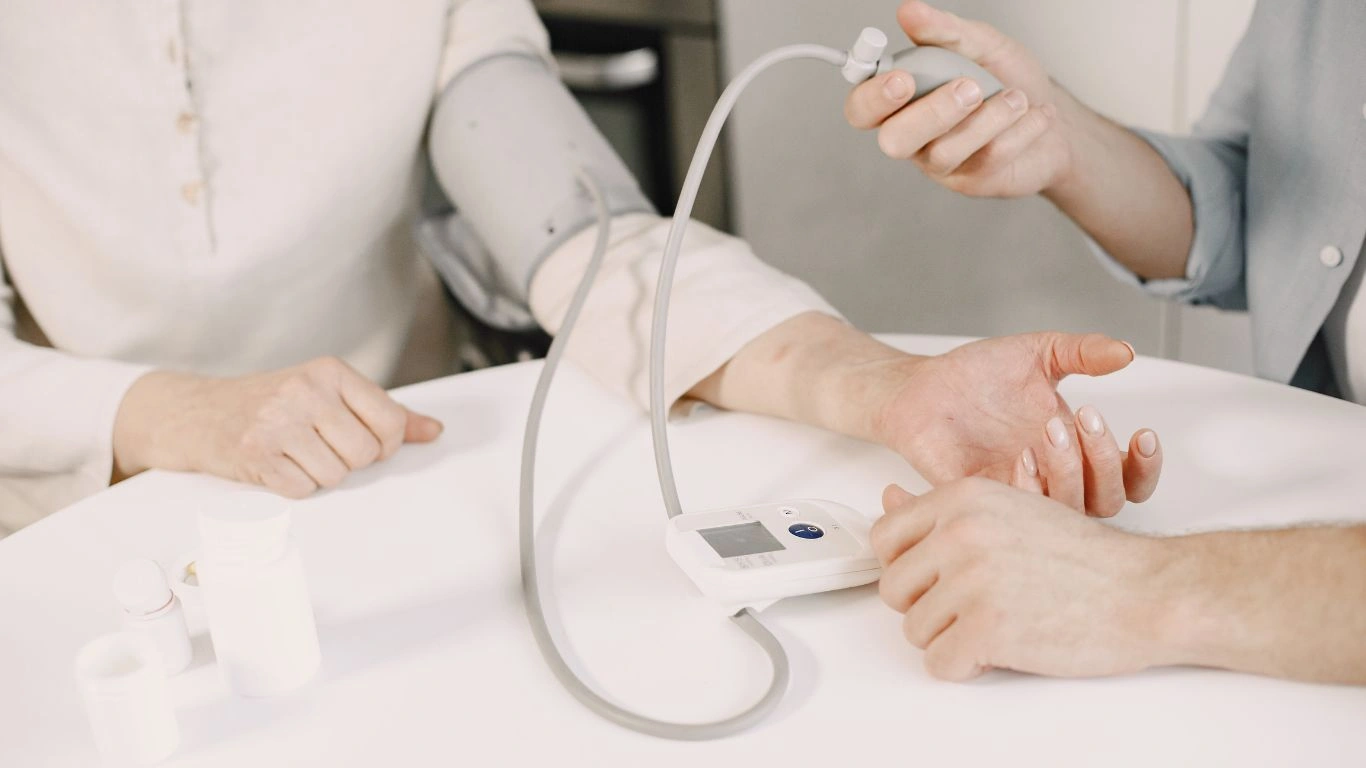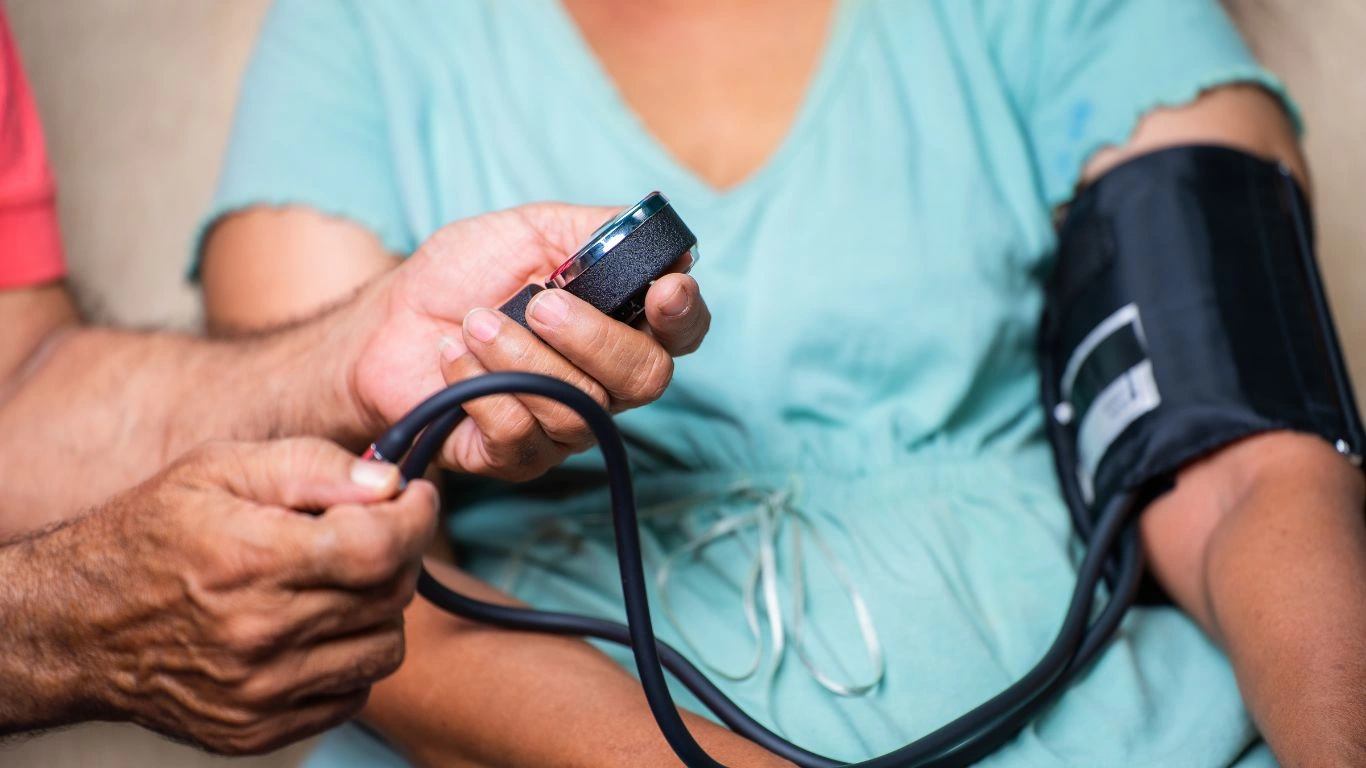How to Manage Blood Pressure at High Altitudes – Essential Tips for Safety
Managing blood pressure can be a challenge in many situations, but have you ever considered how high altitudes affect it? When it comes to how to manage blood pressure at high altitudes, it’s something I’ve become quite familiar with in my practice as an Internal Medicine Physician, particularly in the realm of hypertension management. You see, when you’re at a higher elevation, the oxygen levels are lower, and this can cause significant changes in how your body responds, especially for people who already have elevated blood pressure. This is why understanding the effect of altitude on hypertension is key to maintaining your health, particularly if you’re planning to travel to mountainous or high-altitude areas.
Understanding the Effect of High Altitudes on Blood Pressure
So, why exactly does blood pressure behave differently at high altitudes? Let me break it down for you. When you ascend to higher elevations, your body has to work harder to get the oxygen it needs. This can trigger a number of physiological responses that may have an impact on your blood pressure. For example, the lower oxygen levels cause your heart to pump more vigorously, increasing your heart rate. Additionally, the body may constrict blood vessels to maintain blood flow to vital organs, which can result in an increase in blood pressure.

Why High Altitudes Pose a Risk for People with Hypertension
If you have hypertension, your body might already be struggling to regulate blood pressure under normal conditions. This means that when you move to a higher altitude, the added strain can sometimes lead to a dangerous spike in blood pressure. The risk is even more pronounced for those who are not used to living or traveling at high elevations. For individuals with preexisting high blood pressure, this can lead to an increased risk of complications such as strokes, heart attacks, and even kidney damage if not properly managed.
In my own experience working with patients who live in or travel to high-altitude locations, I’ve found that their blood pressure can sometimes reach dangerously high levels if they’re not careful. In fact, one of the biggest challenges in hypertension management at high altitudes is the unpredictability of how a person’s body will respond. While some people adjust quickly, others may need more time or specific interventions to get their blood pressure under control. It’s important to note that the body does eventually acclimate to the altitude, but this process can take time, and the changes in blood pressure may not be immediately obvious.
How to Manage Blood Pressure at High Altitudes
Managing your blood pressure at high altitudes requires a combination of lifestyle adjustments, monitoring, and sometimes medication. Let’s go through some practical steps I recommend to my patients.
1. Stay Hydrated
It’s essential to stay hydrated when you’re at high altitudes. Dehydration is common in these environments, and it can exacerbate the effects of hypertension. When you’re dehydrated, your blood volume decreases, which can further strain the heart and blood vessels, potentially causing an increase in blood pressure. Drinking plenty of water helps maintain your blood volume and ensures that your body functions optimally. Avoid alcohol and caffeine, as they can dehydrate you and negatively impact your blood pressure.
2. Gradual Acclimatization
One of the best ways to avoid drastic blood pressure spikes is to allow your body to gradually adjust to higher altitudes. This is where acclimatization comes into play. If you’re planning a trip to a high-altitude destination, try to ascend slowly. Avoid rushing to the top of a mountain or high plateau. Spend a few days at intermediate elevations to give your body the chance to adapt to the lower oxygen levels.
During my practice, I’ve recommended gradual acclimatization for patients traveling to destinations such as the Himalayas or the Andes. This approach not only helps your body adjust to the altitude but also minimizes the risk of developing altitude sickness, which can be dangerous for those with preexisting hypertension.
3. Keep Monitoring Your Blood Pressure
If you have hypertension, it’s vital to keep a close eye on your blood pressure while at high altitudes. I always advise my patients to bring a portable blood pressure monitor with them when traveling to high elevations. Monitoring regularly will help you identify any concerning changes in your blood pressure. If you notice any spikes, you can take action quickly and consult with a healthcare professional if needed.

4. Take Your Medications as Prescribed
Another important aspect of managing blood pressure at high altitudes is continuing to take your hypertension medications as prescribed. Don’t stop or adjust your medications without consulting your doctor, even if you’re feeling fine. In some cases, I’ve had patients who felt great initially after arriving at a high-altitude location, but their blood pressure unexpectedly spiked after a few days. Consistent medication use helps keep your blood pressure stable, even as your body adjusts to the altitude.
If you’re planning a trip, talk to your healthcare provider about your current medications and whether any adjustments are needed for the altitude. Sometimes, your doctor may prescribe additional medications to help you manage blood pressure in these new conditions. This is an essential step, especially for those who are prone to hypertensive crises in challenging environments.
The Importance of Monitoring Your Health and Working with a Healthcare Provider
As we’ve discussed, understanding how to manage blood pressure at high altitudes is all about preparation and awareness. If you have hypertension, it’s important to work closely with your healthcare provider to ensure that you’re taking the right steps to prevent complications. Monitoring your blood pressure, staying hydrated, and acclimatizing gradually are just the start. But the key takeaway is that everyone reacts differently to altitude, so it’s essential to stay alert to any changes in your body. Trust me, the last thing you want is to be caught off guard by a spike in blood pressure when you’re hundreds of miles away from your regular healthcare providers.

Additional Tips for Managing Blood Pressure in High-Altitude Locations
We’ve covered the basics of managing blood pressure when you’re at high altitudes, but let’s dive deeper into some more specific strategies that I’ve found helpful in my practice. When you’re dealing with hypertension, every little adjustment can make a huge difference, especially when you’re exposed to the challenges of a high-altitude environment. The goal is to stay ahead of any potential spikes in your blood pressure, and that’s where these additional tips come into play.
5. Monitor Your Diet at High Altitudes
One of the lesser-known factors that can affect your blood pressure at high altitudes is your diet. Now, I’m sure you’ve heard the usual advice about avoiding salty foods to manage hypertension, but the effects of diet at higher elevations can be more pronounced. Let me tell you, I’ve worked with several patients who have struggled with blood pressure spikes after indulging in foods they might normally enjoy at sea level.
At high altitudes, your body is already under stress, and consuming too much salt or processed foods can put extra strain on your circulatory system. Salt causes your body to retain water, which increases blood volume and can lead to an increase in blood pressure. While I don’t want to sound like a broken record, it’s vital to monitor your sodium intake closely when you’re at higher elevations. Opt for fresh fruits, vegetables, and lean proteins instead of packaged snacks, which tend to be loaded with sodium.

6. Engage in Light Physical Activity
You might be thinking, “Wait, shouldn’t I be avoiding exercise at high altitudes?” Well, not exactly. Let me explain: light physical activity can actually help improve blood circulation, and this can be incredibly beneficial for managing hypertension in high-altitude environments. That said, I don’t recommend running marathons or doing intense weightlifting sessions right away. Instead, start with gentle walking or stretching exercises.
In fact, one of the best things you can do is to take short, brisk walks throughout the day. These light activities help to keep your blood flowing without overexerting yourself. When I’ve had patients traveling to places like the Swiss Alps or Colorado, I always emphasize how important it is to move around in moderation. Overdoing it can lead to dizziness or fatigue, which can worsen your blood pressure. So, listen to your body and take breaks as needed. Gradual movement is key.
7. Be Aware of the Symptoms of Altitude Sickness
At high altitudes, it’s not just your blood pressure that you need to keep an eye on – altitude sickness can also complicate things. This is something I often bring up with my patients who are planning trips to elevations above 8,000 feet. Altitude sickness can cause symptoms like headaches, nausea, dizziness, and shortness of breath. These symptoms can sometimes mimic the signs of high blood pressure, making it difficult to tell what’s really going on with your body.
If you start experiencing these symptoms, don’t ignore them. Listen to your body and take them seriously. The best course of action is to descend to a lower altitude immediately. In addition to monitoring your blood pressure, I recommend using over-the-counter medications like acetaminophen or ibuprofen to help manage mild symptoms of altitude sickness, but always check with your doctor before taking anything. If the symptoms persist, you should seek medical attention to rule out more serious complications.

How Medications Can Help You Manage Blood Pressure at High Altitudes
For some individuals, lifestyle changes may not be enough to manage blood pressure in high-altitude environments. That’s where medication comes into play. Let me tell you, as someone who treats many patients with hypertension, medications are often a vital part of the management plan. But at higher altitudes, it’s not just a one-size-fits-all approach. The type of medication you’re on might need to be adjusted to account for the added environmental factors. It’s crucial to work with your healthcare provider to ensure you’re on the right medications for your specific needs.
8. Beta-Blockers: A Common Treatment
Beta-blockers are one of the most commonly prescribed medications for managing high blood pressure, and they can be particularly effective at high altitudes. These medications work by reducing the workload on your heart and helping your blood vessels relax, which in turn lowers your blood pressure. In my experience, beta-blockers can be especially helpful for people who experience increased heart rate and blood pressure spikes due to the lower oxygen levels at higher altitudes.
If you’re traveling to high elevations and are already on a beta-blocker, make sure to discuss with your doctor whether any adjustments are needed to ensure it continues to be effective. Sometimes, your doctor might recommend a dose increase or an additional medication to address altitude-induced hypertension.
9. Diuretics and ACE Inhibitors
Diuretics and ACE inhibitors are other types of blood pressure medications that can be beneficial for managing hypertension at high altitudes. Diuretics, also known as water pills, help reduce the volume of fluid in your bloodstream, which can help lower blood pressure. ACE inhibitors work by relaxing blood vessels, making it easier for your heart to pump blood. Both of these medications can help you stay on top of your blood pressure while adjusting to the challenges of a high-altitude environment.
When prescribing these medications, I always consider the specific needs of the patient and their unique health profile. For example, diuretics may not be the best choice if you’re prone to dehydration, which can be a common issue at high altitudes. That’s why it’s critical to have a conversation with your healthcare provider before embarking on any high-altitude adventures so that your medication regimen is optimized for your travel needs.
Monitoring Your Blood Pressure Regularly at High Altitudes
Finally, I can’t stress enough how important it is to continue monitoring your blood pressure when you’re in a high-altitude environment. As you make the necessary lifestyle changes, it’s crucial to keep an eye on your numbers to ensure that your efforts are paying off. I always recommend that my patients bring a portable blood pressure cuff when traveling to areas above 8,000 feet. Monitoring your blood pressure allows you to catch any spikes early, so you can make adjustments before it becomes a serious issue.
It’s also worth mentioning that keeping a blood pressure log can be a helpful tool for both you and your doctor. By tracking your readings over time, you’ll be able to see how your body is responding to the altitude and your medications. This data can be invaluable for your healthcare provider, helping them make the best decisions for your treatment plan.
How to Recognize and Respond to Hypertensive Emergencies at High Altitudes
As we’ve discussed throughout this article, managing blood pressure at high altitudes is a multi-faceted process, but sometimes, despite our best efforts, blood pressure can still reach dangerously high levels. This is where understanding hypertensive emergencies becomes crucial. A hypertensive emergency occurs when your blood pressure rises to levels that can cause damage to your organs. When you’re at a high altitude, your body’s ability to cope with sudden changes in blood pressure may be compromised, so it’s important to know when you’re in danger and how to act.
10. Understanding Hypertensive Emergencies
Hypertensive emergencies can be a terrifying experience, especially if you’re far from your usual healthcare providers or in a remote high-altitude location. Typically, a hypertensive crisis is defined as a blood pressure reading of 180/120 mmHg or higher. If you experience this, immediate medical attention is necessary. I’ve encountered cases in my practice where patients’ blood pressure levels skyrocketed after spending a few days at higher elevations. The symptoms are usually clear – you might experience severe headaches, chest pain, shortness of breath, or even blurred vision. If any of these symptoms arise, it’s essential to take action quickly.
In my experience, I’ve found that hypertension at high altitudes can escalate rapidly, which is why I urge my patients to stay vigilant. If you’re on a high-altitude adventure and start feeling any of these symptoms, don’t ignore them. Try to descend to a lower elevation as soon as possible and seek medical help. Timely intervention is the key to preventing long-term damage.

11. Steps to Take During a Hypertensive Crisis
So, what should you do if you find yourself or a loved one in a hypertensive crisis? Here are some essential steps to take:
- Remain calm: Panic can exacerbate the situation. Try to stay calm and reassure yourself or the person who is experiencing the crisis.
- Seek immediate medical attention: Hypertensive emergencies require immediate intervention, so call emergency services or head to the nearest medical facility.
- Stop any physical exertion: Avoid any strenuous activities, as they can cause your heart rate to rise further. Rest in a comfortable position and try to relax.
- Monitor your blood pressure: If possible, take another reading to confirm whether your blood pressure is indeed dangerously high. This can help medical personnel understand the severity of the situation.
- Follow your doctor’s advice: If you’re already on hypertension medications, make sure to follow your doctor’s instructions. In some cases, adjustments might be necessary.
Understanding the Role of Acclimatization and Lifestyle Adjustments
While it’s essential to recognize the risks associated with high altitudes, it’s also important to note that proper acclimatization can significantly reduce your chances of experiencing hypertensive complications. As mentioned earlier, taking your time to adjust to the altitude is critical. The body takes time to adapt, and rushing through this process can put additional stress on your circulatory system.
12. The Importance of Acclimatization in Managing Blood Pressure
Acclimatization is more than just a precautionary measure to avoid altitude sickness – it’s also essential for managing your blood pressure at high altitudes. By gradually ascending, you allow your body to adapt to the lower oxygen levels. This process helps the body regulate its blood pressure and reduces the risk of severe spikes.
From my experience, patients who take the time to acclimate properly before heading to high altitudes tend to fare much better than those who try to rush the process. A slow ascent not only helps reduce the likelihood of a hypertensive crisis but also gives your body the time it needs to adjust to the increased demand on the heart and circulatory system.
13. Avoiding Overexertion During High Altitude Activities
Another key factor in managing blood pressure at high altitudes is avoiding overexertion. While light activity, as we discussed earlier, is beneficial, it’s equally important not to push yourself too hard. At higher elevations, even mild physical exertion can cause your heart rate to rise more quickly than it would at sea level.
For example, when hiking in mountainous regions or engaging in other outdoor activities, listen to your body. If you start to feel lightheaded or experience any unusual symptoms, it’s crucial to take a break and rest. I’ve had patients who, despite feeling fine at the start of their activities, overexerted themselves and experienced significant blood pressure spikes. It’s better to pace yourself and enjoy the experience without putting unnecessary strain on your cardiovascular system.
Monitoring Blood Pressure Long-Term After High Altitude Exposure
After returning from a high-altitude location, it’s important to continue monitoring your blood pressure, even if you’ve returned to a lower elevation. I’ve had many patients who, once back home, don’t realize that their blood pressure remains elevated for days or even weeks after they’ve descended. This post-altitude hypertension is something that should not be overlooked.
14. Post-Trip Blood Pressure Monitoring
Even if you feel fine after returning from a high-altitude trip, it’s important to monitor your blood pressure for a few weeks. The stress on your cardiovascular system caused by the lower oxygen levels at high altitudes may have lingering effects. I always advise my patients to check their blood pressure regularly during this period, especially if they have a history of hypertension. If you notice persistent high readings, it’s a good idea to consult with your doctor to see if any adjustments are needed in your treatment plan.
In some cases, blood pressure may return to normal on its own as your body fully adjusts to the lower altitude. However, for others, the adjustment period may be longer, and medication may need to be adjusted accordingly. If you’re concerned, it’s always a good idea to schedule a follow-up appointment with your healthcare provider to discuss your blood pressure and overall health after your trip.

References
For more information on hypertension management at high altitudes, please refer to trusted sources such as the American Heart Association and National Institutes of Health (NIH).
Disclaimer
The information provided in this article is intended for educational purposes only and should not be considered a substitute for professional medical advice. If you have concerns about your blood pressure or your health while traveling to high altitudes, please consult with a healthcare professional who can provide personalized guidance.

Dr. Gwenna Aazee is a board-certified Internal Medicine Physician with a special focus on hypertension management, chronic disease prevention, and patient education. With years of experience in both clinical practice and medical writing, she’s passionate about turning evidence-based medicine into accessible, actionable advice. Through her work at Healthusias.com, Dr. Aazee empowers readers to take charge of their health with confidence and clarity. Off the clock, she enjoys deep dives into nutrition research, long walks with her rescue pup, and simplifying medical jargon one article at a time.





